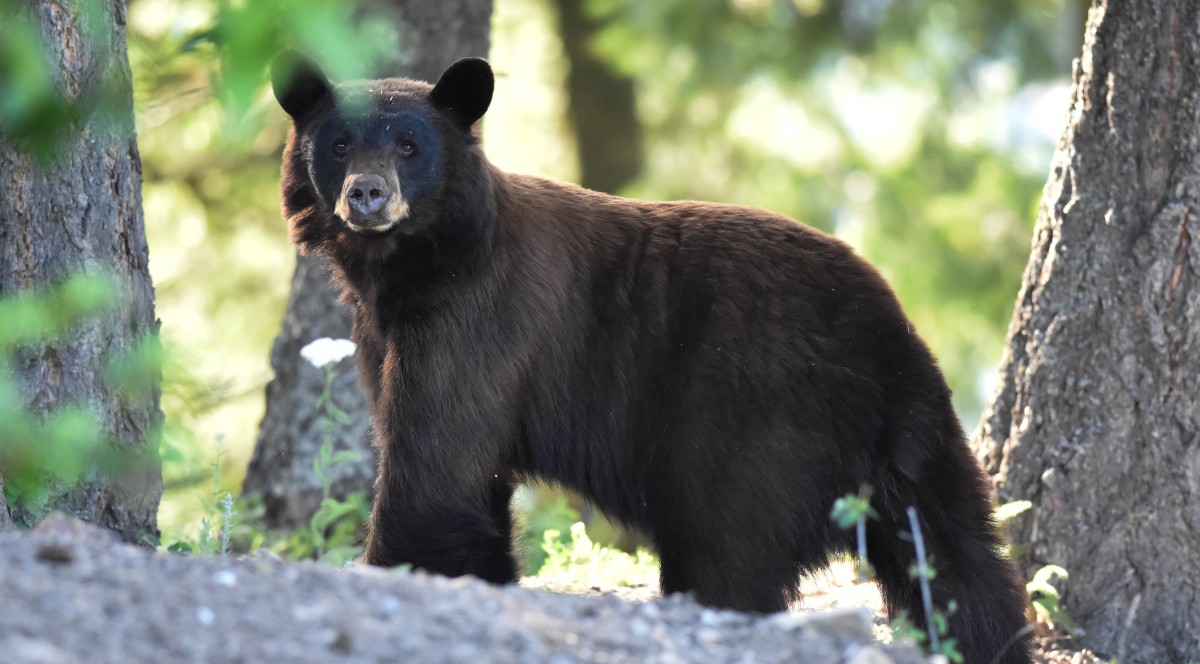Family of 5 bears found hibernating under Lake Tahoe home
Human residents had to bear with the intruders as the animals vacated their winter beds.

A California family unexpectedly discovered that they had been sharing their home with a family of five bears — an adult female and four cubs. The bears recently emerged from underneath a home in Lake Tahoe, where they had been hibernating for the winter.
The BEAR League — a volunteer-led bear conservation organization and rescue service — described the bear's emergence on April 19 in a Facebook post.
In the post, the group mentioned that the female bear had three 9-month-old cubs of her own, and had "adopted" an orphaned bear cub that was about the same age. Before the winter began last year, the now five-member bear family found an "unsecured crawl space opening" beneath a home in Lake Tahoe, California, where they hibernated for the season.
Related: Mysterious brain infection makes bears act 'like friendly dogs'
Throughout the winter, the home's human residents heard "some odd rumbling and snoring-like noises" beneath their floors, but were unable to identify the source of the sounds — until the bear family awoke and "prepared to exit" from the crawl space, according to the post,
The residents promptly called the BEAR League for assistance. That was when the organization's volunteers discovered that there were multiple bears under the house, BEAR League Executive Director Ann Bryant told the Huffington Post.
Upon arrival, BEAR League volunteers entered the crawl space and created a lot of noise to "encourage" the bear family to vacate, according to KTVU FOX 2.
Get the world’s most fascinating discoveries delivered straight to your inbox.
BEAR League volunteers are trained to handle such interactions safely, as they are frequently contacted in the spring to assist homeowners who acquired bear "roommates" over the winter, KTVU reported.
"They were just waking up," Bryant told KTVU. "We got the mother out, and she called to the babies, and they came."
Three species of bears are native to North America, but the Tahoe bears were black bears (Ursus americanus) — the only wild species in California, and there are approximately 25,000 to 35,000 bears in the state, according to the California Department of Fish and Widlife.
Black bears can weigh up to 500 pounds (227 kilograms) and during the summer months they spend almost 20 hours each day eating vast quantities of nuts, fruits, insects, and small mammals, fueling up for the coming winter months, according to the Conservation Society of California.
According to the North American Bear Center, a bear and wildlife education facility in Ely, Minnesota, black bears begin seeking or building dark, cozy winter dens from September to October. They look for rock crevices, caves and hollow trees — and in some rare cases,a home's crawl space. Once in the den, as the bear prepares to hibernate, its body temperature decreases and its active heart rate falls from 80 to 100 beats per minute to 50 to 60 beats per minute.
Black bears will hibernate for several months before reemerging in the spring. In March 2022, the Lake Tahoe Interagency Bear Team, a partnership between the California Department of Fish and Wildlife, California State Parks, Nevada Department of Wildlife, Tahoe Regional Planning Agency, and the USDA Forest Service, asked Lake Tahoe residents to anticipate increased bear activity as the animals emerged from their winter dens, according to the Tahoe Daily Tribune.
The Lake Tahoe Interagency Bear Team advises that Tahoe residents and visitors should never approach a wild bear, and if a bear is in the vicinity people should increase their distance from the animal — but you should never run or act aggressively towards the bear.
"People really need to make sure their crawl space openings are closed and secured before bears go inside," Bryant told the Huffington Post. "especially in the fall, when they are looking for hibernation dens."
Originally published on Live Science.

Scott is a staff writer for How It Works magazine and has previously written for other science and knowledge outlets, including BBC Wildlife magazine, World of Animals magazine, Space.com and All About History magazine. Scott has a masters in science and environmental journalism and a bachelor's degree in conservation biology degree from the University of Lincoln in the U.K. During his academic and professional career, Scott has participated in several animal conservation projects, including English bird surveys, wolf monitoring in Germany and leopard tracking in South Africa.


